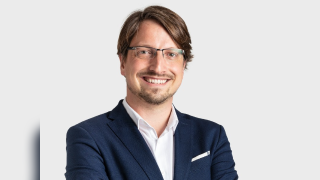March saw the ITW Global Leaders’ Forum (GLF) hold its first in-person meeting since the pandemic at Capacity Middle East. In attendance were representatives from the GLF’s 22 board member companies, including Obaid Ur Rahman, head of wholesale at Axiata Group Berhad.
For Axiata Group, which joined the industry body in June 2021, it wasn’t just Rahman’s first physical board meeting, but an opportunity for Axiata to advance its work on fraud and security.
“My agenda is very clear with the GLF: we don’t want to be a party that just shares information, we want to actively contribute to the betterment of the industry as far as the Asia-Pacific region is concerned. That is what we have set as our internal objective for our GLF participation,” Rahman says. “Our econometrics and geopolitics here in Asia are a little different from what other members bring to the table, and we are proud to bring that diversity,” he adds.
To date, Axiata has been involved in the fraud workstream, which allowed the group to share how it has tackled fraud in its markets, particularly in voice – elaborating not only on what went wrong, but how to fix it, from a receiving party perspective.
“We are able to propel our internal efforts in anti-fraud and help to mitigate it in our businesses,” Rahman says. “Voice still represents a sizeable share of commercial value across our markets. We have about 19 million expats living and working outside our home market,” he explains.
For its next focus, Axiata will participate in the security workstream. Explaining the value GLF membership brings for Axiata, Rahman says: “It allows us to actively engage in discussions with other telco group wholesale members, international bodies and political experts to share and learn how industry challenges are approached and tackled.
“The community also allows us to discuss the evolving trends and business models and look at the relevance to our own six markets in Asia,” he adds.
Connecting the region
On Wednesday afternoon Rahman will join the Subsea – Pacific Focus panel on stage B for a discussion on new projects and route diversity.
With Bifrost, Echo, Topaz and Apricot, there is plenty of activity in the Pacific, but the cables making the headlines are mostly focused on intercontinental connectivity, rather than the regional last mile that is required for the practicalities of addressing unconnected and under-connected areas.
For the regional and local players, Rahman says, the next wave of opportunity lies here.
“The hyperscalers’ appetite is for access between continents and then somebody else picks up that last mile piece. That is where telcos like us and regional carriers come in. The scale of the investment we would have to make earlier is less, but for diversity we build up the regional map,” he says.
The wider Asia region has two immediate challenges to address: rapid growth in consumption and ageing infrastructure.
“These five or six new cables that have been invested in or announced, they are not the ones that will serve our core purpose. There has to be more investment and infrastructure built by the regional players,” Rahman says.
The future, as he sees it, will see the region lean into a hub-and-spoke model, with the established hubs of Hong Kong and Singapore shifting, and new ones opening up.
“All the cables we are building up regionally are going to have some form of touch point for Malaysia, Indonesia and Singapore,” he says.
Axiata’s current cable project list includes the IAX cable in Sri Lanka and the BASICS cable in Indonesia, with a third project, in Bay of Bengal, still under wraps at the time of interview.
Rahman’s focus in the near two years since he was appointed to head Axiata wholesale has been to invest and execute projects through the opcos and unify them at the wholesale level to create synergies across the group. With the foundations set, he says the group is looking at “multiple investments at this point in time”.
“Some are strategic, while some are opportunistic, or tactical,” he explains.
Elsewhere in the group, these developments are supported by Axiata’s 66% stake in LinkNet – confirmed earlier this year for a little more than US$600 million – and the $12 billion mobile merger with Telenor for the creation of Celcom Digi.
“The regulation is opening up. The direction we have taken is to keep the regional mindplay but serve the hyperscaler needs, rather than creating new need. There is ample to create that pipeline instead of creating new content and new business.”





